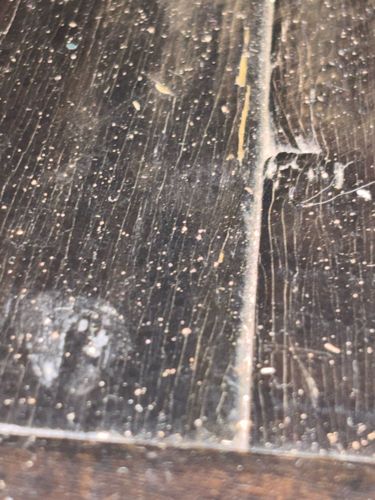Spider Mite
Scientific Name: Tetranychus urticae (Two-spotted spider mite is a very common species in this family, though exact species identification is difficult from the image alone)
Order & Family: Order: Trombidiformes, Family: Tetranychidae
Size: Typically 0.2 to 0.5 mm (0.008 to 0.02 inches) in length, making them barely visible to the naked eye. They appear as tiny moving dots.

Natural Habitat
Spider mites are found on a wide range of plants, indoors and outdoors. They thrive in hot, dry, and dusty conditions. Common habitats include greenhouses, gardens, nurseries, agricultural fields, houseplants, and urban landscapes. The image shows them on what appears to be a dusty surface, which is conducive to their presence near plant material.
Diet & Feeding
Spider mites are plant sap feeders. They pierce plant cells with their mouthparts and suck out the chlorophyll and cell contents, causing characteristic stippling (tiny dots) on leaves and overall plant weakening. They feed on a wide variety of plants, including ornamentals, fruits, vegetables, and field crops.
Behavior Patterns
Spider mites tend to colonize the undersides of leaves, where they spin fine silken webs (visible in the image). They reproduce rapidly, especially in warm, dry conditions, leading to quick population explosions. Females lay tiny, spherical eggs on the webs or leaves. They are often active during daytime hours but can be found at any time.
Risks & Benefits
Risks: Spider mites are major agricultural and horticultural pests. Their feeding can cause severe damage to plants, including discoloration, leaf drop, reduced plant vigor, and even plant death if infestations are heavy. They can spread quickly, making them difficult to control. Benefits: In natural ecosystems, they can be a food source for predatory mites and insects, playing a role in the food chain, but their pest status often outweighs any benefits in managed environments.
Identified on: 8/19/2025